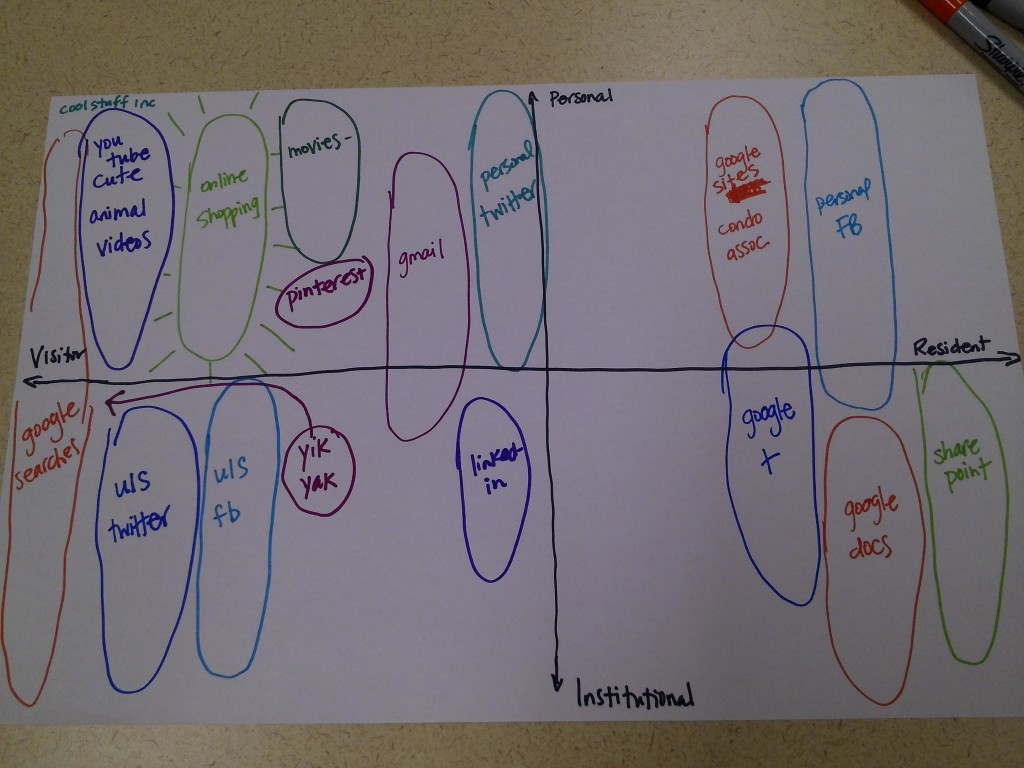|
Listen to this post
Getting your Trinity Audio player ready...
|

This librarian hangs out on YikYak to “hear” what students are saying about the library and the university. She mapped it as Visitor because she does not leave a social trace or participate actively, rather she “lurks” (elegantly or otherwise).
I’ve thought and written about this before, but the popping up of YikYak in a V&R map at Carnegie Mellon last week, and a flutter of interest in it in HE contexts in the UK this week have made me think again about why it’s important for people to have spaces where their words and thoughts can be encountered and interacted with but not captured or curated.
Sam Ladner laid out the landscape of concerns about privacy and freedom of expression really nicely in 2013, the platform in question then was Snapchat, and I think her points are relevant for any discussion around platforms that facilitate the disappearance of content. There are reasons, excellent reasons, why people might want their words or images to not be remembered. Simon Thomson summarizes them briefly here.
The hazard in instructional contexts is when ephemerality is combined with anonymity. Trolling and bad behavior is as much a part of the internet as it is in real life. it’s particularly visible to me on Twitter, but the fact is that the Internet is Made of People and we are not beyond the worst of our potential in digital or physical places. Racism, sexism, bullying behavior and worse are among the hazards of our society, and anonymity makes it much much easier to attack people and then slink away. In a digital instruction situation, anonymity is inappropriate. If we want for our students to take chances and speak to each other about concepts that they are unsure about or uncomfortable with, we also need to make sure those spaces are safe and that people are held accountable for their words. Anonymity makes that nearly impossible. Students in physical classrooms can be encouraged to speak, and we know who they are. Students in ephemeral digital classrooms should be identifiable to each other as the people who they are, to foster community as well as responsibility.
So, I can see (much to my chagrin, as I am historically opposed to making arguments for things to be built in institutional systems) an argument for institutions creating (non-anonymous) YikYak type spaces in their LMS/VLEs, because currently those spaces track and keep content. Designing a digital institutional spaces that deliberately forget content would be injecting into digital learning spaces an affordance easily achieved in physical spaces.
The trick (there’s always a trick) would be in convincing the students that conversations and interactions in such spaces are in fact safely ephemeral.
Just because you build it, doesn’t mean they will come.